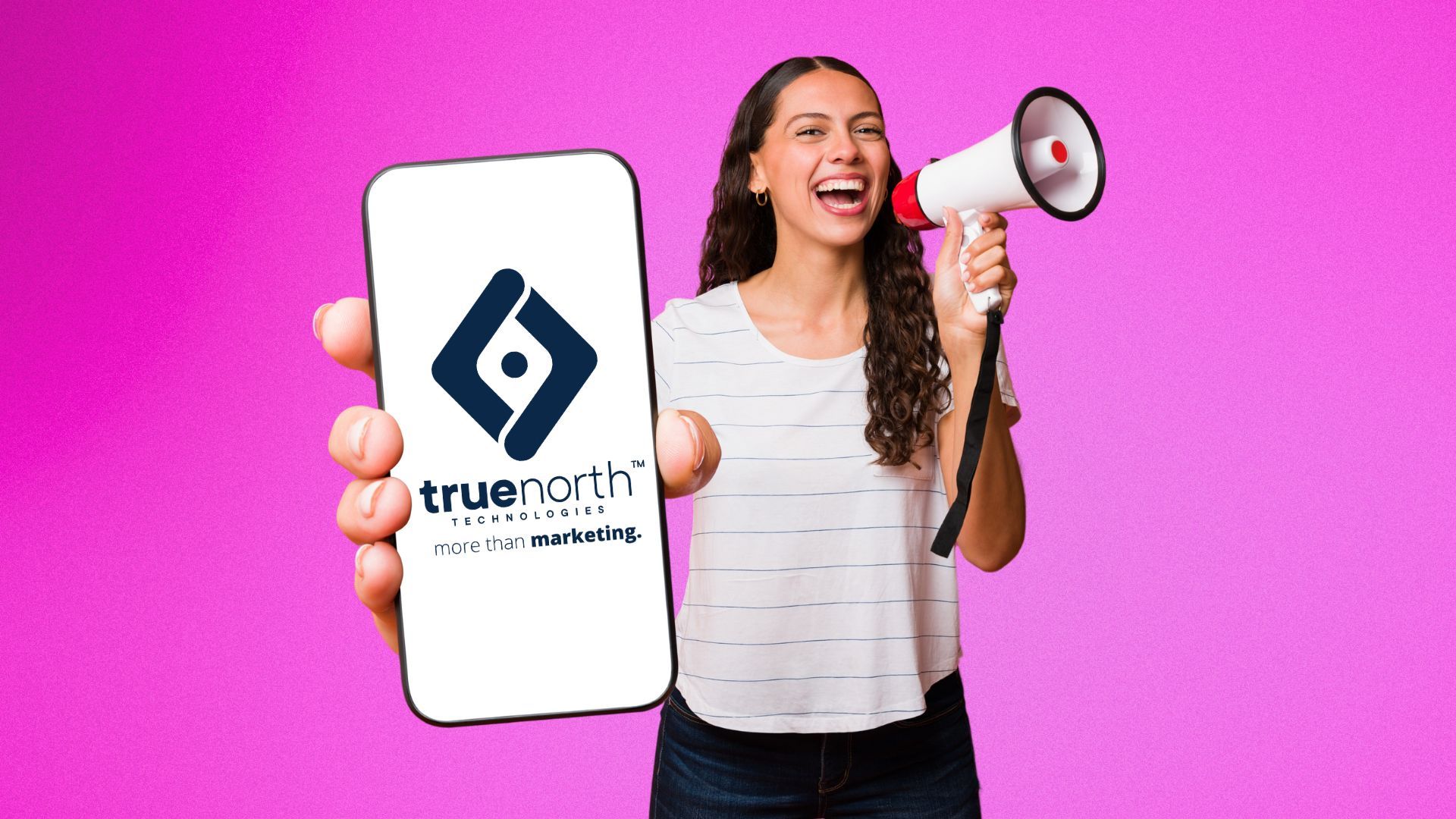Blog
True North Technologies Blog
All Blogs

In today’s digital-first world, your Google Business Profile (formerly Google My Business) is often the first impression potential customers have of your company. Whether you run a local shop, a service-based business, or a large enterprise, optimizing your Google Business Profile can significantly boost your visibility, build trust, and drive more leads. At True North Technologies , we understand the power of local SEO and want to help you maximize your profile’s potential. Here’s a step-by-step guide to get your Google Business Profile working for you. 1. Claim and Verify Your Profile If you haven’t already, the first step is to claim your Google Business Profile. Simply go to Google Business Profile and follow the prompts to either create or claim your business listing. Verification usually happens through a postcard, phone, or email. This step is crucial because only verified businesses can manage their profiles and access valuable insights. 2. Complete Every Section with Accurate Information Google favors profiles that are thorough and accurate. Be sure to fill out every section: Business Name: Use your exact business name as it appears in real life. Address: Provide a precise, up-to-date address to help Google show your business in local search results and maps. Phone Number & Website: Make it easy for customers to contact you or learn more. Hours of Operation: Keep these updated, especially during holidays or special events. Business Category: Choose the most relevant category for your business — this helps Google connect you with the right audience. 3. Add High-Quality Photos and Videos Visual content attracts attention and builds trust. Upload professional photos of your storefront, team, products, or services. Videos showcasing your business in action can also boost engagement. Aim for diverse images that accurately represent your brand and keep your profile lively and inviting. 4. Encourage and Respond to Customer Reviews Reviews are a key factor in local SEO and customer decision-making. Encourage satisfied clients to leave honest reviews on your profile. Take time to respond thoughtfully to all reviews, thank positive reviewers and address any concerns in a professional manner. This interaction shows prospective customers that you care about their experience. 5. Use Google Posts to Share Updates and Offers Google Posts allow you to share timely updates, promotions, events, or news directly on your Business Profile. Regular posts keep your audience informed and signal to Google that your business is active. Think of this as a mini social media platform that appears right in search results. 6. Leverage Q&A to Provide Helpful Information Google Business Profiles include a Q&A section where potential customers can ask questions about your business. Monitor this regularly and provide clear, helpful answers. You can even preemptively add common questions and answers to guide users and reduce friction. 7. Monitor Your Profile’s Performance with Insights Google offers valuable analytics that show how customers find your profile, what actions they take, and where they’re located. Use these insights to adjust your strategy and focus on what’s working best. True North Technologies can help you interpret these data points to drive even better results. Why Work with True North Technologies? Optimizing your Google Business Profile is just one part of a broader digital marketing strategy. At True North Technologies, we specialize in SEO, website development, and reputation management to help your business shine online. If you want expert guidance or hands-on help to get your profile and your entire online presence performing at its best, reach out to us today. Optimizing your Google Business Profile is a powerful way to increase local visibility, attract more customers, and grow your business. Start implementing these tips now to unlock your profile’s full potential. Contact us today!

In today's hyperconnected world, digital advertising isn’t optional, it’s essential. With consumers spending more time online than ever before, businesses that want to stay competitive need to meet their audience where they already are, on social media, in search engines, and across websites and apps. At True North Technologies , we help businesses harness the power of digital ads to increase visibility, generate leads, and drive measurable growth. If your business isn’t investing in digital advertising yet, now is the time to start, and here’s why. What Are Digital Ads? Digital ads are paid advertisements that appear online across platforms like Google, Facebook, Instagram, YouTube, LinkedIn, and more. They can take many forms, including: Search ads (Google Ads) Display ads (banners on websites) Social media ads Video ads Retargeting ads Mobile in-app ads The key advantage? Unlike traditional advertising, digital ads are targeted, trackable, and flexible, giving businesses control over who sees their message and how much they spend. 6 Reasons Digital Ads Are Critical in 2025 1. Your Customers Are Online Over 5 billion people use the internet globally, and many of them browse multiple platforms every day. Whether you run a local business or an e-commerce store, digital ads ensure you show up at the right time, in the right place, to the right people. 2. Highly Targeted Reach Digital advertising lets you pinpoint your ideal customer based on demographics, interests, online behavior, location, and more. Instead of wasting dollars on a broad audience, your ad budget works smarter not harder. 3. Real-Time Performance Tracking With digital ads, you’re never going to guess. You’ll see real-time metrics on impressions, clicks, conversions, and ROI. This transparency allows for continuous optimization and smarter decision-making. 4. Cost-Effective Marketing Whether you're working with a $200 budget or $20,000, digital ads are scalable. You can set daily or monthly caps, pause underperforming campaigns, and focus on high-performing keywords or audiences. It’s one of the most budget-friendly ways to test and grow. 5. Supports SEO and Organic Growth Running paid ads alongside an SEO strategy helps increase brand exposure. When users see your business in both organic results and paid placements, it builds trust and improves click-through rates, especially in competitive industries. 6. Drives Measurable Business Results From driving traffic to increasing sales or generating leads, digital advertising is directly tied to business growth. With a clear call-to-action and optimized landing pages, your ads can guide users straight to conversion. Digital Ads in Action: What We Do at True North Technologies At True North Technologies, we partner with businesses to create digital advertising strategies that are built around your unique goals. Whether you're aiming to increase brand awareness, generate leads, or drive online sales, we focus on delivering measurable results through smart targeting, engaging creative, and continuous optimization. Our team manages every step of the process, from campaign planning and audience research to ad design, performance tracking, and strategic adjustments. We’re not just setting up ads, we’re building a system that works in sync with your overall digital marketing strategy. Real Talk: Digital Ads vs. “Doing Nothing” Some business owners hesitate to invest in ads because they’ve tried it in the past without success or think their organic traffic will carry them. But in 2025, doing nothing is riskier than trying something new. Competitors are already reaching your customers online. If you’re not showing up in search results or social feeds, you’re invisible. And invisibility doesn’t grow revenue. Final Thoughts Digital advertising isn’t just about getting clicks, it’s about driving real business outcomes in a digital-first world. It’s efficient, cost-effective, and essential for any business looking to scale in today’s marketplace. If you're ready to start seeing measurable results from your marketing efforts, we’re here to help. At True North Technologies, we make digital ads easy, strategic, and impactful. Ready to grow your business with digital advertising? Let’s talk!

In the fast-paced world of digital marketing, mobile apps have emerged as a powerful tool for businesses looking to engage their audiences, boost brand visibility, and drive customer loyalty. With smartphone usage continuing to skyrocket, companies can no longer afford to ignore the influence that mobile applications have on consumer behavior and marketing strategies. At True North Technologies , we specialize in custom mobile app development and strategic digital solutions . We’ve seen firsthand how mobile apps are transforming how businesses connect with their audiences, and we’re here to help you stay ahead of the curve. Why Mobile Apps Matter in 2025 Mobile usage is no longer just part of the customer journey, it is the journey. As of 2025, over 64% of web traffic originates from mobile devices, and users now spend more than 3 hours per day in mobile apps. Businesses that invest in mobile app development are tapping into a space where their customers already live, work, and shop. Whether it’s a retail store launching a loyalty app, a restaurant offering mobile ordering, or a service-based company building a scheduling tool, mobile apps give brands direct access to consumers without the distractions of search engines or social feeds. Key Benefits of Mobile Apps in Digital Marketing 1. Enhanced Customer Engagement Mobile apps allow businesses to interact with customers in real time through push notifications, personalized content, and instant support. This level of engagement helps improve customer retention and builds stronger relationships over time. 2. Data-Driven Insights Apps provide a goldmine of data from user behavior and location tracking to purchase history and app usage. With the right analytics in place, marketers can optimize their campaigns and personalize the user experience in ways that simply aren’t possible on traditional websites. 3. Increased Brand Visibility Having a branded app on a user’s device means your logo is seen every day. It’s constant passive exposure. That visibility keeps your business top of mind and reinforces your brand identity. 4. Seamless Integration with Digital Campaigns Mobile apps can be integrated into your broader digital marketing strategy, linking to email campaigns, social media promotions, loyalty programs, and more. 5. Improved Conversion Rates A well-designed app simplifies the path to purchase. With faster load times, streamlined checkouts, and personalized experiences, apps typically convert at higher rates than mobile websites. How Businesses Are Using Mobile Apps Strategically Industries of all kinds are leveraging mobile apps to meet their customers where they are: Retail & E-commerce: Offering app-exclusive discounts and push notifications for flash sales. Restaurants: Enabling mobile ordering, reservations, and reward points. Healthcare: Allowing patients to book appointments and access records via secure mobile apps. Professional Services: Providing client portals, document sharing, and project tracking on the go. Whether you’re a small business or an enterprise brand, mobile apps provide scalable solutions that grow with your business. Custom Mobile App Development with True North Technologies At True North Technologies, we build custom mobile app solutions tailored to your business goals and user needs. We don’t just stop at development. As a full-service digital marketing agency, we also provide guidance on launching your app effectively through integrated marketing strategies including SEO, digital ads, social media, and more . Final Thoughts The rise of mobile apps in digital marketing is more than just a trend, it’s a shift in how brands connect with customers in a mobile-first world. By investing in a custom mobile app, you’re not just keeping up, but you’re standing out. If you're ready to unlock the power of mobile for your business, our team at True North Technologies is here to help. Let’s build something great together. Contact us today.

In today’s digital-first world, your brand reputation isn’t just important, it’s everything. Potential customers trust online reviews and public perception just as much as personal recommendations. That’s why customer reputation management has become one of the most powerful tools for business growth, and at True North Technologies, we’re here to help you take control of it. Whether you’re a local service provider or an online retailer, your success depends on what people are saying about you. Here’s how reputation management can fuel your growth, and how True North Technologies can guide you along the way. Why Customer Reputation Management Matters Before making a purchase, booking a service, or even visiting a website, most customers do one thing first: they Google you. They check your reviews, look for testimonials, and read social media comments. A few negative reviews, or a lack of recent positive ones, can be enough to send them to your competitors. According to research , 87% of customers won’t consider a business with low ratings. Managing your online reputation isn’t just about looking good, it’s about building trust, increasing visibility, and driving conversions. What Is Customer Reputation Management? Customer reputation management is the strategic process of monitoring, influencing, and improving how your brand is perceived online. It involves: Responding to customer reviews (both positive and negative) Encouraging happy customers to leave reviews Monitoring social mentions and brand chatter Ensuring consistency across review platforms like Google, Facebook, and Yelp Promoting testimonials on your website and social media Addressing and resolving customer concerns quickly and professionally At True North Technologies, we offer custom reputation management solutions that are proactive, efficient, and aligned with your brand. The Growth Benefits of Reputation Management 1. Boosts Trust and Credibility A strong online reputation builds consumer confidence. When potential customers see dozens of positive reviews and timely, professional responses to feedback, they’re more likely to trust your business and ultimately choose you. 2. Improves Local SEO Rankings Search engines like Google factor in reviews when ranking local businesses. Businesses with consistent, high-quality reviews and up-to-date profiles are more likely to appear in the Local Pack (those top results with maps and star ratings). This increases your visibility and brings more traffic to your site. Want to know more about how SEO plays a role in your digital growth? Check out our blog on Why Your Business Needs a Strong SEO Strategy in 2025 . 3. Drives More Conversions Reviews act as social proof. When visitors see others had a great experience with your business, they feel more confident converting, whether that means calling for a quote, placing an order, or booking a service. 4. Gives You a Competitive Edge Many businesses still overlook reputation management or don’t have a solid strategy in place. By being proactive, you can stand out in your industry, win more trust, and grow faster than competitors who neglect this key area. Final Thoughts: Reputation = Revenue In today’s competitive market, your online reputation is often your first impression, and sometimes your only one. By taking control of your digital presence and making customer feedback part of your growth strategy, you can turn your reputation into one of your most valuable marketing tools. At True North Technologies, we help businesses build, protect, and promote reputations that drive real results. From strategy to implementation, we’re your partner in long-term growth. Want to grow your business through better reviews and stronger customer trust? Let’s talk about your reputation strategy. Contact us today to schedule a consultation.

At True North Technologies, we know that marketing is about more than just grabbing attention, it’s about creating clarity, trust, and connection. That’s why we go beyond surface-level design and tap into something deeper: visual psychology. One of the most influential concepts in visual psychology is the Gestalt Principles . These principles explain how humans naturally perceive and organize visual information. While they originated in early 20th-century psychology, they’re still incredibly relevant today, especially in video advertising and customer reputation management, two key services we offer . Here’s how understanding how people see helps us create marketing that people remember. Gestalt in Action: Smarter, More Effective Video Advertising Videos are one of the most powerful tools in modern marketing, but only when they’re done right. It’s not enough to have flashy visuals or catchy music. If the message isn’t clear and cohesive, viewers won’t stay engaged, or worse, they won’t remember what your brand was even about. This is where Gestalt principles come in. 1. Continuity: Guiding the Viewer’s Journey In video editing, smooth transitions and visual direction are key. Gestalt’s continuity principle states that the eye naturally follows lines and patterns. We apply this by carefully arranging motion, graphics, and scene transitions to guide the viewer’s focus and ensure that every second feels purposeful. Whether it's the way a product enters the frame or how text moves on screen, we craft flow with intention, so the viewer isn’t confused, distracted, or overwhelmed. 2. Figure/Ground: Making the Message Pop When something important appears in a video, the viewer needs to instantly recognize it. The figure/ground principle helps us do that by separating key elements (like a logo, tagline, or testimonial) from the background with contrast, motion, or placement. This ensures the most critical parts of your message don’t just blend into the noise, they stand out, get noticed, and stick in the viewer’s mind. 3. Similarity & Repetition: Reinforcing Brand Identity Incorporating repeating elements like your brand colors, logo animations, fonts, or even a signature visual style, activates the similarity principle. This makes your video feel unified and strengthens brand recall. It’s a subtle but powerful way to build recognition every time someone watches your ad. Customer Reputation Management: The Psychology of Perception Just like design and video, customer reputation management is about shaping how your audience perceives you, and Gestalt principles play a role here, too. 1. Proximity: Grouping Positive Signals Online, users quickly scan for patterns. When they see a collection of positive reviews grouped together on your website or Google profile, the proximity principle kicks in: they naturally associate these reviews with overall credibility. At True North, we design review displays and testimonial sections that use proximity and layout strategy to emphasize trust at a glance. 2. Closure: Filling the Gaps with Emotion When customers read a few strong, well-written reviews, their brains often “fill in the gaps” using the closure principle. This means they don’t need to read every single review to form a positive opinion; they get a feel for your business from just a few. That’s why we help businesses highlight a curated, consistent set of feedback that reflects their values and service quality. 3. Similarity: Creating Consistency Across Platforms Whether someone reads about your business on Google, Facebook, or your website, the tone and visuals should feel familiar. Using the similarity principle, we ensure your branding, messaging, and even review response style remain cohesive across all platforms. This builds trust and reassures potential customers that your business is legitimate and professional. Why It Works: Designing for Human Behavior At the heart of it all, Gestalt principles are about understanding how people think and see. Whether it's a 15-second video ad or a stream of five-star reviews, we use these principles to design content that feels intuitive, polished, and trustworthy. True North Technologies doesn’t just create marketing materials, but we create experiences that connect. By blending psychology with design, we help your brand make a lasting impression in a crowded digital world. Ready to transform how people see your business? Let’s harness the power of visual psychology to elevate your marketing—from video to reputation and beyond. Contact us today to get started.

Trends, Tools & Tactics for a Winning Strategy In the ever-evolving world of digital marketing, staying ahead of the curve is essential—especially when it comes to social media. In 2025, platforms are smarter, audiences are more selective, and content must be more strategic than ever. Whether you’re a startup or an established company, here’s how to master social media marketing in 2025 and stay competitive. 1. Embrace Short-Form Video as a Core Strategy Short-form video continues to dominate across platforms like TikTok, Instagram Reels, and YouTube Shorts. It’s not just trendy—it’s effective. Brands using video content in their social media strategy are seeing better reach, higher engagement, and stronger brand recall. Pro Tip: Keep videos authentic, mobile-optimized, and aligned with your brand voice. 2. Use AI and Automation Without Losing the Human Touch AI tools are reshaping content marketing—from auto-generating captions to predicting the best times to post. But in 2025, success depends on blending automation with genuine storytelling. AI-driven tools can now analyze user behavior to recommend the best posting times, tailor content to specific audience segments, and even generate video scripts or image suggestions. These tools reduce manual workload and increase the speed of campaign execution—allowing teams to stay agile in a fast-moving landscape. But with all this innovation, there's a caveat: authenticity matters more than ever. Audiences in 2025 can spot generic or robotic content a mile away. The most successful brands are those that use AI to enhance creativity, not replace it. 3. Go Beyond Likes: Prioritize Conversions and Commerce Social media is now a key driver of sales—not just brand awareness. In-app shopping , product tagging, and clickable video content are transforming platforms into storefronts. We help businesses set up and optimize paid social advertising campaigns that are designed to convert, not just attract followers. 4. Diversify Platforms—But Be Strategic Different platforms offer different strengths—Instagram excels at visual storytelling, LinkedIn is ideal for professional thought leadership, and TikTok thrives on entertainment and discovery. Rather than stretching your resources thin by being everywhere at once, focus on building a strong presence where your target audience is most engaged. Then, tailor your content to match the tone, format, and behavior of users on each platform for maximum impact. 5. Data Is the New Creative Your content might be captivating, but if it’s not supported by data, it’s a shot in the dark. A successful social media marketing strategy in 2025 requires the ability to measure performance and adapt quickly. Social platforms now offer advanced analytics that go beyond likes and shares. These analytics offer helpful insights that can help identify: The best days and times to post Top-performing content themes Efficient ad spending options Top trends Goals tied to business outcomes Ready to Elevate Your Brand’s Social Presence? In 2025, success on social media requires more than just being active—it takes intention, creativity, and data-driven execution. Let True North Technologies help you turn your social platforms into a growth engine. Contact us today to schedule a call and start mastering your social media presence.

As we begin 2025, businesses must adapt to new trends and challenges of Search Engine Optimization (SEO) as it continues to become more relevant. Whether you're running a small startup or an established company, a robust SEO strategy is no longer optional—it’s essential. Here’s why your business needs a strong SEO strategy in 2025: 1. Increased Competition in the Digital Space As more businesses invest in online marketing, the digital marketplace is becoming increasingly crowded. In 2025, there will be even more companies vying for attention across search engines, social media platforms, and beyond. SEO is the key to standing out. A well-executed SEO strategy helps ensure that your website ranks higher on search engine results pages (SERPs) , making it more likely that potential customers will find your business before they find your competitors. 2. Google’s Algorithm Updates Keep Changing Google's algorithms are constantly evolving to provide users with the most relevant, high-quality search results. In 2025, it’s expected that Google will continue to refine its ranking system with updates focusing on user intent, mobile-first indexing, and even more advanced AI-based algorithms. A strong SEO strategy helps businesses keep up with these changes and ensures that their website is optimized for each update, preventing a drop in rankings. 3. User Experience (UX) Will Be More Important Than Ever Google has increasingly emphasized the importance of a positive user experience as a ranking factor. In 2025, factors like site speed, mobile optimization, easy navigation, and relevant content will continue to play a crucial role in determining where your site ranks. A strong SEO strategy focuses not only on keyword optimization but also on creating a seamless and user-friendly experience for visitors, helping to keep users engaged and coming back for more. 4. Voice Search and AI Will Dominate With the rise of voice search through smart devices like Alexa, Siri, and Google Assistant, optimizing for voice search will be more important than ever. As people ask questions in a more conversational tone, businesses must adapt their SEO strategies to include long-tail keywords and natural language. Additionally, AI advancements will make personalized search results the norm, making it essential to provide high-quality, relevant content tailored to your audience's needs. 5. SEO Provides Long-Term Results Unlike paid advertising, SEO offers long-term benefits that compound over time. While ads can deliver instant results, SEO can generate organic traffic that steadily increases as your website climbs the search rankings. In 2025, a strong SEO strategy will provide your business with sustained growth, ensuring that your content continues to be discoverable and valuable to your target audience. 6. Local SEO is Key for Small and Medium Businesses For small and medium-sized businesses , local SEO will remain one of the most effective ways to connect with customers in your area. In 2025, local search queries are expected to grow, as users seek businesses near them. Claiming and optimizing your Google Business Profile, ensuring your NAP (Name, Address, Phone number) information is consistent, and generating positive customer reviews will be essential components of your local SEO strategy. 7. Content Marketing and SEO Go Hand-in-Hand Content marketing and SEO are a dynamic duo that, when paired together, can create powerful results. As search engines continue to prioritize high-quality, relevant content, having an SEO strategy that aligns with your content marketing efforts will help you rank higher and connect with your target audience. In 2025, content creation will be more than just producing blog posts—it will involve creating videos, infographics, and podcasts that serve your audience’s needs while being optimized for search. 8. The Shift Towards Mobile-First In 2025, mobile-first indexing will be more important than ever. With the growing reliance on smartphones and tablets, Google primarily uses the mobile version of your site to determine rankings. If your site isn’t mobile-friendly, you’re likely missing out on valuable traffic. A strong SEO strategy ensures that your website is optimized for mobile, offering users a seamless browsing experience no matter what device they’re on. 9. Measurable ROI One of the biggest advantages of SEO is that its results are trackable and measurable. You can monitor the success of your SEO strategy by tracking key metrics like organic traffic, bounce rate, conversion rates, and keyword rankings. With the right tools and analytics in place, you can clearly see how your SEO efforts are impacting your bottom line, making it easier to adjust strategies as needed to maximize results. 10. SEO Builds Trust and Credibility Trust is a key factor in customer decision-making. Websites that rank well in search engines are often perceived as more credible and trustworthy. A strong SEO strategy not only focuses on ranking but also on providing value through helpful, informative, and well-crafted content. By demonstrating expertise and addressing customer needs, you can build trust with your audience, increasing the likelihood of conversions and brand loyalty. Stay Relevant With SEO As we enter 2025, SEO will continue to be one of the most valuable tools for businesses looking to succeed in a competitive digital landscape. A solid SEO strategy ensures that your business stays relevant, competitive, and visible to potential customers. Whether you’re looking to improve your website’s user experience, capitalize on local SEO, or build a content marketing plan, now is the time to invest in SEO for long-term growth and success. If you’re looking to get started or optimize your existing SEO strategy, True North Technologies is here to help. Contact us today to learn how we can help you grow your online presence and achieve measurable results!

With billions of users online, brands are constantly fighting for attention. Consumers are bombarded with ads, emails, and social media content every day, making it harder than ever to break through the noise. So, how can businesses stand out and create lasting impressions? The answer lies in authentic connections—building real relationships with your audience instead of just selling to them. At True North Technologies, we believe that digital marketing is more than just clicks and conversions; it’s about creating meaningful interactions that foster trust, loyalty, and long-term success. Here’s why authentic connections matter in digital marketing. 1. Consumers Crave Realness Today’s consumers are savvier than ever. They can spot a generic ad or sales pitch from a mile away, and they’re not easily swayed by overly polished, impersonal messaging. Instead, they gravitate toward brands that feel genuine, relatable, and human. One of the best ways to showcase authenticity is through organic content —unpaid, value-driven posts that highlight your brand’s personality, mission, and customer experiences. By using organic messaging, behind-the-scenes content, and real customer experiences, businesses can create a sense of transparency and trust—two factors that are essential for building strong relationships. Whether it’s through social media, email marketing, or paid advertising, your messaging should feel personal, not robotic. 2. Trust Leads to Loyalty Trust is the foundation of any successful brand. When customers feel like they know and understand a brand, they’re more likely to engage, buy, and advocate for it. But trust isn’t built overnight—it requires consistent, honest communication. One way to establish credibility is by showcasing user-generated content (UGC) and real customer testimonials. When potential customers see others sharing positive experiences with your brand, they’re more likely to believe in your product or service. Additionally, responding to comments, reviews, and messages in a thoughtful and authentic way reinforces that you value your audience’s voice. 3. Authenticity Improves Engagement People engage with content that resonates with them emotionally. Authentic digital marketing doesn’t just tell people what they want to hear—it speaks to their values, interests, and pain points. This is why brands that embrace organic content see higher engagement rates across digital platforms. Unlike paid ads, organic content allows brands to connect with their audience in a more natural way. Sharing stories, educational content, and interactive posts creates a two-way conversation that keeps followers engaged. Brands that humanize their messaging by sharing behind-the-scenes content, team highlights, or even admitting mistakes (and showing how they’ve improved) foster deeper emotional connections. Simon Sinek's "Golden Circle" concept can be particularly helpful here. By focusing on why your brand exists before explaining what you do and how you do it, you’ll establish a deeper emotional connection with your audience. Consumers are more likely to engage with a brand that shares its purpose and values, rather than simply promoting a product or service. 4. Personalization Enhances the Customer Experience Personalized marketing is another way to create authentic connections with your audience. People don’t want to feel like just another number in your sales funnel; they want to feel like they matter. Using data-driven insights , brands can craft highly relevant content tailored to individual preferences and behaviors. Whether it’s through personalized email campaigns, dynamic website content, or targeted digital ads, brands that speak directly to their audience’s needs create stronger, more meaningful relationships. 5. Authentic Brands Stand the Test of Time Trends come and go, but authenticity never goes out of style. Brands that prioritize real, human connections don’t just gain customers—they build communities. By fostering long-term relationships instead of focusing solely on short-term gains, businesses can create sustainable growth and brand loyalty that lasts for years. At True North Technologies , we help brands craft authentic digital marketing strategies that go beyond surface-level tactics. From social media and content marketing to paid digital advertising, we focus on creating real connections that drive real results. Ready to Build Authentic Connections? If you’re looking to elevate your digital marketing strategy with authenticity at its core, we’re here to help. Let’s create a marketing approach that feels human, builds trust, and drives lasting success. Contact us today to get started!

Owning a website is essential for businesses, personal brands, and entrepreneurs looking to grow their brand and establish an online presence. The first step to creating your website is securing a domain name. A domain is your website’s unique address on the internet, such as www.yourbusiness.com . If you're unsure where to start, this guide will walk you through the process of buying a domain name. Step 1: Choose the Right Domain Name Before purchasing a domain, it's important to decide on a name that aligns with your brand and is easy to remember. Here are some tips for choosing the perfect domain name: Keep it short and simple. Use keywords relevant to your business (or try using your business name if available.) Avoid numbers and hyphens. Choose a memorable and brandable name. Ensure it’s easy to spell and pronounce. Step 2: Check Domain Availability Once you have a name in mind, check if it’s available using a domain registrar. Websites like GoDaddy and Hover allow you to search for available domain names and provide alternative suggestions if your desired name is taken. Step 3: Choose a Domain Extension Domain extensions (also known as top-level domains or TLDs) include .com, .net, .org, and many more. The .com extension is the most popular and widely recognized, but depending on your industry, you might consider alternatives like: .org for nonprofits and organizations .net for technology-based businesses .shop for e-commerce stores .tech for technology-focused sites Step 4: Register Your Domain Once you’ve found an available domain name and chosen an extension, it’s time to register it. Here’s how: Select a trusted domain registrar such as GoDaddy or Hover. Add your domain to the cart and proceed to checkout. Choose the registration period (typically one year, with renewal options). Opt for domain privacy protection to keep your personal information secure. Complete the purchase. Step 5: Connect Your Domain to a Website After purchasing your domain, you need to connect it to a website. If you already have a hosting provider (like WordPress.com or SiteGround), follow their instructions to link your domain. If you haven’t chosen a hosting provider yet, consider purchasing one that offers domain registration and website hosting in one package. Step 6: Renew Your Domain Regularly Domain names require annual renewal to stay active. Set up auto-renewal or mark your calendar to ensure you don’t lose ownership of your domain. Offering Secure Website Solutions Since 2019 Buying a domain is the first step to building your online presence. By following these steps, you can secure a professional and brandable domain name that helps establish credibility and attract visitors. If you need assistance with website development , SEO, or digital marketing, True North Technologies is here to help! Need Help Getting Started? Contact True North Technologies today to learn more about our digital solutions!

As we kick-off 2025, we’ve seen businesses across all industries utilizing artificial intelligence (AI) to improve customer engagement. One of the most significant advancements in this area is the implementation of AI-powered chatbots, modernizing how companies interact with their customers, streamline operations, and boost conversions. Whether you're a small business or a large enterprise, AI chatbots are quickly becoming a must-have tool for engaging with customers in real-time, providing instant support, and delivering a personalized experience. Let’s explore how AI-powered chatbots are redefining customer engagement in 2025. What are AI-Powered Chatbots? AI-powered chatbots are essentially virtual assistants integrated into websites or mobile apps that use artificial intelligence to simulate human-like conversations. These chatbots are designed to interact with users in real-time, answering questions, resolving issues, and assisting with tasks without the need for human intervention. These systems are becoming more sophisticated with advanced features like natural language processing (NLP) , machine learning, and predictive analytics. This means they can understand context, learn from past interactions, and provide increasingly accurate and helpful responses over time. How AI-Powered Chatbots Improve Customer Engagement 1. Instant and 24/7 Customer Support One of the biggest advantages of AI-powered chatbots is its ability to provide instant support 24/7. Customers no longer need to wait for business hours or for a human agent to become available. The AI chatbot can handle inquiries at any time of day or night, making it perfect for businesses that have a global audience or operate outside of traditional working hours. 2. Personalized Customer Experience AI chatbots are also becoming smarter at personalizing conversations based on customer data. Through integrations with CRM systems, AI-powered chatbots can offer tailored recommendations, remember past interactions, and provide relevant content based on the customer’s preferences and behavior. This level of personalization helps build a stronger relationship between businesses and customers. For instance, if a customer has previously bought products from your online store, the chatbot can offer tailored product suggestions or inform them about new arrivals based on their past purchases. 3. Lead Generation and Qualification AI chatbots can also be used as powerful tools for lead generation. Instead of relying solely on forms or cold calls, chatbots can qualify leads in real time. By asking relevant questions and gathering important information, the AI can determine whether a website visitor is a potential customer and pass qualified leads to your sales team. 4. Reducing Bounce Rates and Improving Conversions One of the most significant challenges for online businesses is reducing bounce rates —when visitors leave a website after viewing just one page. AI webchat can help decrease bounce rates by engaging visitors the moment they land on your site. It can prompt them with a message, offer assistance, or answer questions, keeping them engaged and guiding them down the sales funnel. AI chatbots can use data to identify when a customer might be ready to make a purchase or needs additional help to complete a transaction. With timely interventions and tailored support, AI chatbots can significantly increase conversion rates. Learn more about maximizing conversion rates by reading our latest blog! 5. Reducing Customer Service Costs The chatbot can also be a huge cost-saver for businesses. By automating routine inquiries and tasks, AI chatbots free up human agents to focus on more complex issues that require a personal touch. This allows businesses to handle more customer interactions without increasing their staff or operational costs. AI chatbots can handle FAQs, order tracking, product recommendations, and even troubleshooting steps, leaving human agents available for high-value customer service interactions, like resolving complaints or managing escalated issues. 6. Data-Driven Insights and Continuous Improvement One of the most valuable aspects of utilizing an AI chatbot is its ability to collect and analyze data. By tracking every interaction, AI chatbots can provide insights into common customer pain points, popular products, frequently asked questions, and much more. This data can help businesses improve their offerings, refine their messaging, and identify opportunities for optimization. AI systems continually improve through machine learning . The more interactions the chatbot has, the more it learns, which means it can provide more accurate, relevant, and helpful responses over time. How to Implement an AI-Powered Chatbot on Your Website Implementing AI-powered chatbot on your website might seem like a complex task, but it’s more accessible than ever before. At True North Technologies , we specialize in integrating AI chatbot features into websites to provide businesses with the tools they need to engage their customers effectively. From selecting the right chatbot platform to customizing its responses and integrating it with your CRM, we can guide you through the entire process. Whether you’re looking to improve customer service, increase conversions, or enhance lead generation, we can customize a chatbot solution that meets your needs. Our team will work closely with you to integrate an AI chatbot into your website, ensuring it provides value from day one. With our expertise in digital marketing, we can help you maximize the potential of an AI-powered chatbot and transform your customer engagement strategies in 2025. Contact True North Technologies today to learn more about our AI-powered chatbot installation services and how we can help your business stay ahead of the competition.
